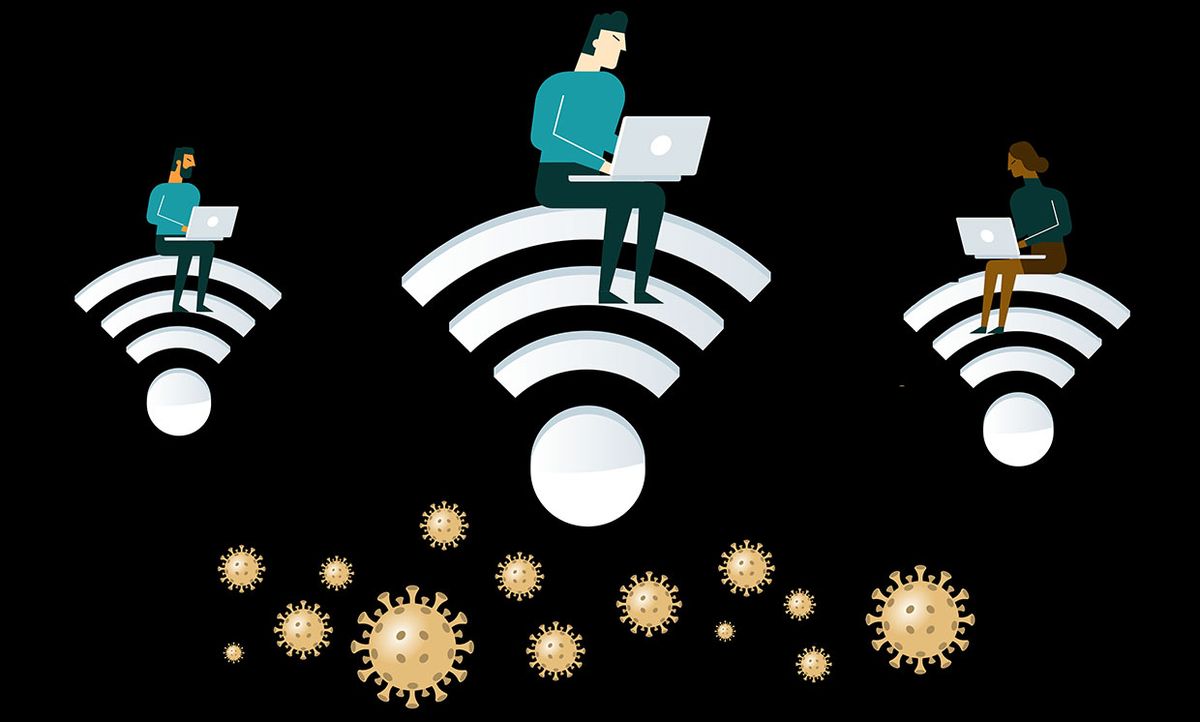The continuing spread of COVID-19 has forced far more people to work and learn remotely than ever before. And more people in self-isolation and quarantine means more people are streaming videos and playing online games. The spike in Internet usage has some countries looking at ways to curb streaming data to avoid overwhelming the Internet.
But the amount of data we’re collectively using now is not actually the main cause of the problem. It’s the fact that we’re all suddenly using many more low-latency applications: teleconferencing, video streaming, and so on. The issue is not that the Internet is running out of throughput. It’s that there’s a lot more demand for data that needs to be delivered without any perceivable delay.
“The Internet is getting overwhelmed,” says Bayan Towfiq, the founder and CEO of Subspace, a startup focusing on improving the delivery of low-latency data. “The problem is going to get worse before it gets better.” Subspace wasn’t planning to come out of stealth mode until the end of this year, but the COVID-19 crisis has caused the company to rethink those plans.
“What’s [been a noticeable problem while everyone is at home streaming and videoconferencing] is less than one percent of data. [For these applications] it’s more important than the other 99 percent,” says Towfiq. While we all collectively use far more data loading webpages and browsing social media, we don’t notice if a photo takes half a second to load in the same way we notice a half-second delay on a video conference call.
So if we’re actually not running out of data throughput, why the concern over streaming services and teleconferencing overloading the Internet?
“The Internet doesn’t know about the applications running on it,” says Towfiq. Put another way, the Internet is agnostic about the type of data moving from point A to point B. What matters most, based on how the Internet has been built, is moving as much data as possible.
And normally that’s fine, if most of the data is in the form of emails or people browsing Amazon. If a certain junction is overwhelmed by data, load times may be a little slower. But again, we barely notice a delay in most of the things for which we use the Internet.
The growing use of low-latency applications, however, means those same bottlenecks are painfully apparent. When a staff Zoom meeting has to contend with someone trying to watch the Mandalorian, the Internet sees no difference between your company’s videochat and Baby Yoda.
For Towfiq, the solution to the Internet’s current stress is not to cut back on the amount of video-conferencing, streaming, and online gaming, as has been suggested. Instead, the solution is what Subspace has been focused on since its founding last year: changing how the Internet works by forcing it to prioritize that one percent of data that absolutely, positively has to get there right away.
Subspace has been installing both software and hardware for ISPs in cities around the world designed to do exactly that. Towfiq says ISPs already saw the value in Subspace’s tech after the company demonstrated that it could make online gaming far smoother for players by reducing the amount of lag they dealt with.
Initially Subspace was sending out engineers to personally install its equipment and software for ISPs and cities they were working with. But with the rising demand and the pandemic itself, the company is transitioning to “palletizing” its equipment: making it so that, after shipping it, the city or ISP can plug in just a few cables and change how their networks function.
Now, Towfiq says, the pandemic has made it clear that the startup needed to immediately come out of stealth. Even though Subspace was already connecting its new tech to cities’ network infrastructure at a rate of five per week in February, coming out of stealth will allow the company to publicly share information about what it’s working on. The urgency, says Towfiq, outweighed the company’s original plans to conduct some proof-of-concept trials and build out a customer base.
“There’s a business need that’s been pulled out of us to move faster and unveil right now,” Towfiq says. He adds that Subspace didn’t make the decision to come out of stealth until last Tuesday. “There’s a macro thing happening with governments and Internet providers not knowing what to do.”
Subspace could offer the guidance these entities need to avoid overwhelming their infrastructure. And once we’re all back to something approximating normal after the COVID-19 outbreak, the Internet will still benefit from the types of changes Subspace is making. As Towfiq says, “We’re becoming a new kind of hub for the Internet.”
Michael Koziol is the news manager at IEEE Spectrum. Previously, he was an associate editor covering telecommunications. He graduated from Seattle University with bachelor's degrees in English and Physics, and earned his master's degree in science journalism from New York University.



